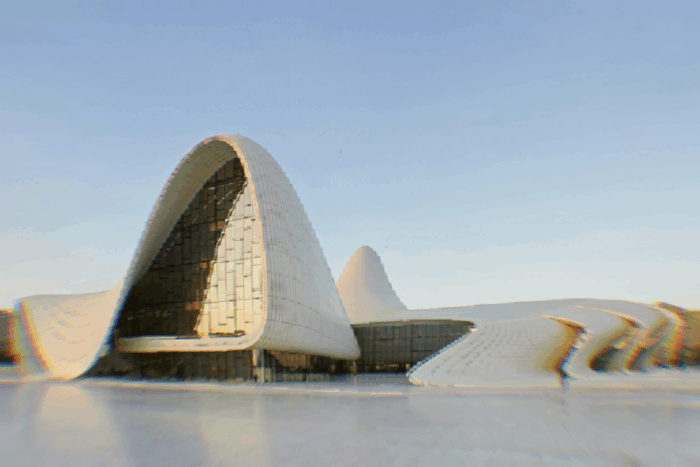
Very few architects openly admit to using AI as part of their design process. (Why pay for a service if you can get a bot to do it for free?) But Patrik Schumacher, who became the principal of Zaha Hadid Architects after Hadid died in 2016, is practically bragging about it. In a panel this month, he said he encourages his employees to use text-to-image programs like DALL-E 2, Midjourney, and Stable Diffusion to come up with early ideas for projects, including NEOM, a controversial development in the Middle East. He added that he usually includes “Zaha Hadid” as one of the prompts and says it’s similar to the verbal instructions he gives to his designers to reference old projects. Is it, though? While the tools have gotten more powerful, most of the generated images still feel like uncanny imitations of more sophisticated human ideas; fine at first glance, unsettling if you look twice.
It’s not surprising that the firm is experimenting with AI. Hadid — nicknamed “Queen of the Curve” for her swoopy buildings — eagerly embraced new software in her design process, and her firm was among the first to endorse computational design, 3D modeling, and VR. Still, Hadid often began projects with hand drawings and paintings. Schumacher, who has remained a steady evangelist of computer-aided, parametric design, commented that in some aspects of the creative process, “AI is much more fertile than most of us.” And so, it seems, he starts with a mirror — which makes him a curator of whatever images emerge. “Any of what comes out of this, I claim authorship for it in terms of validating, selecting, elaborating,” he says. “So I feel very kind of empowered by all this possibility.” His embrace of the tool does feed into one of the primary critiques of the firm: that its architecture is all style, without regard for the site, program, or local cultural considerations that might inform a design. But it’s also likely that Hadid’s aesthetic and name recognition are what draw most of its clients. Why not stick with what’s been done and call it “risky”? After Hadid died, many wondered what succession would look like in a firm that was so closely associated with a singular creative genius. Turns out, it looks a lot like more of the same.




